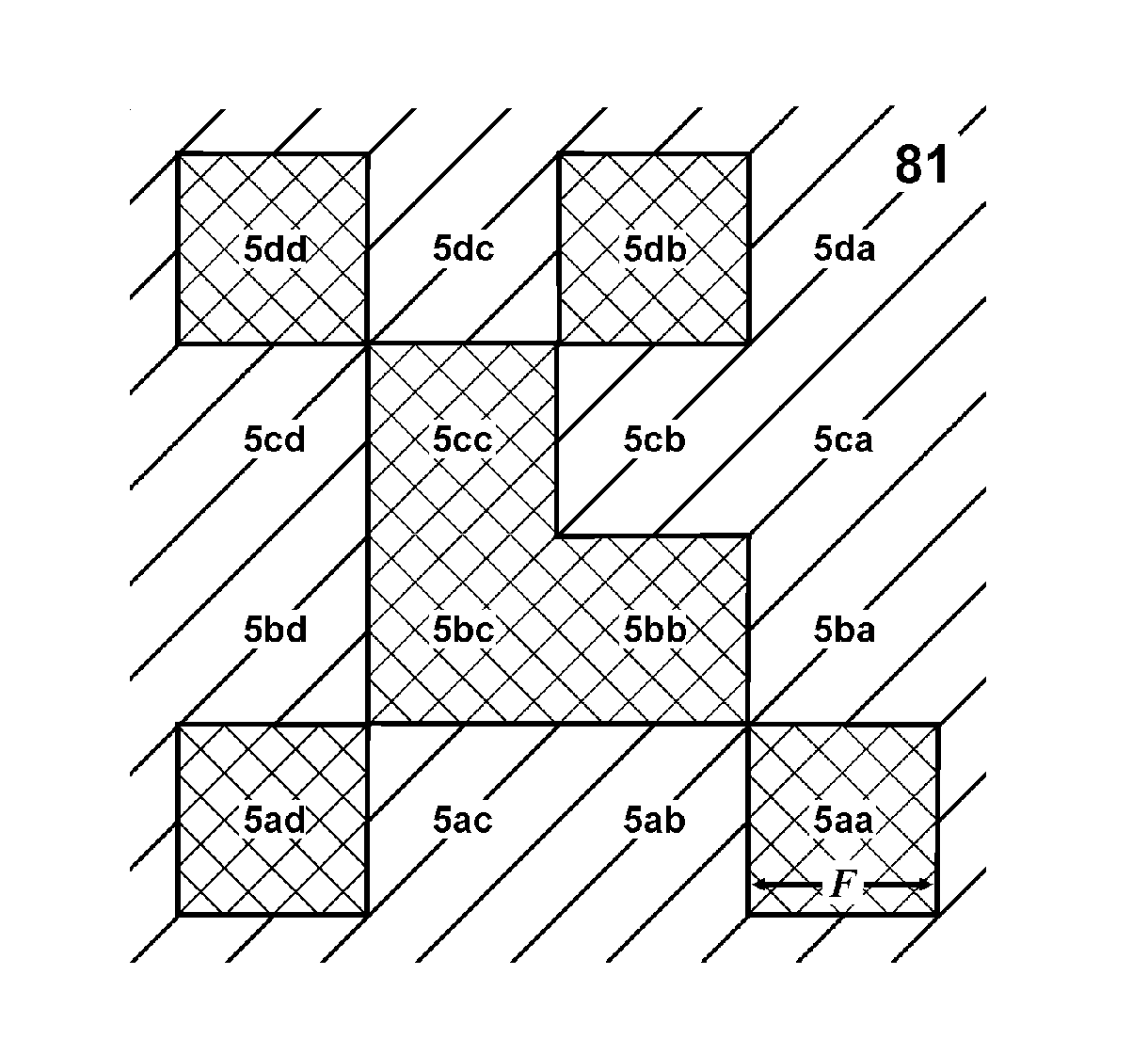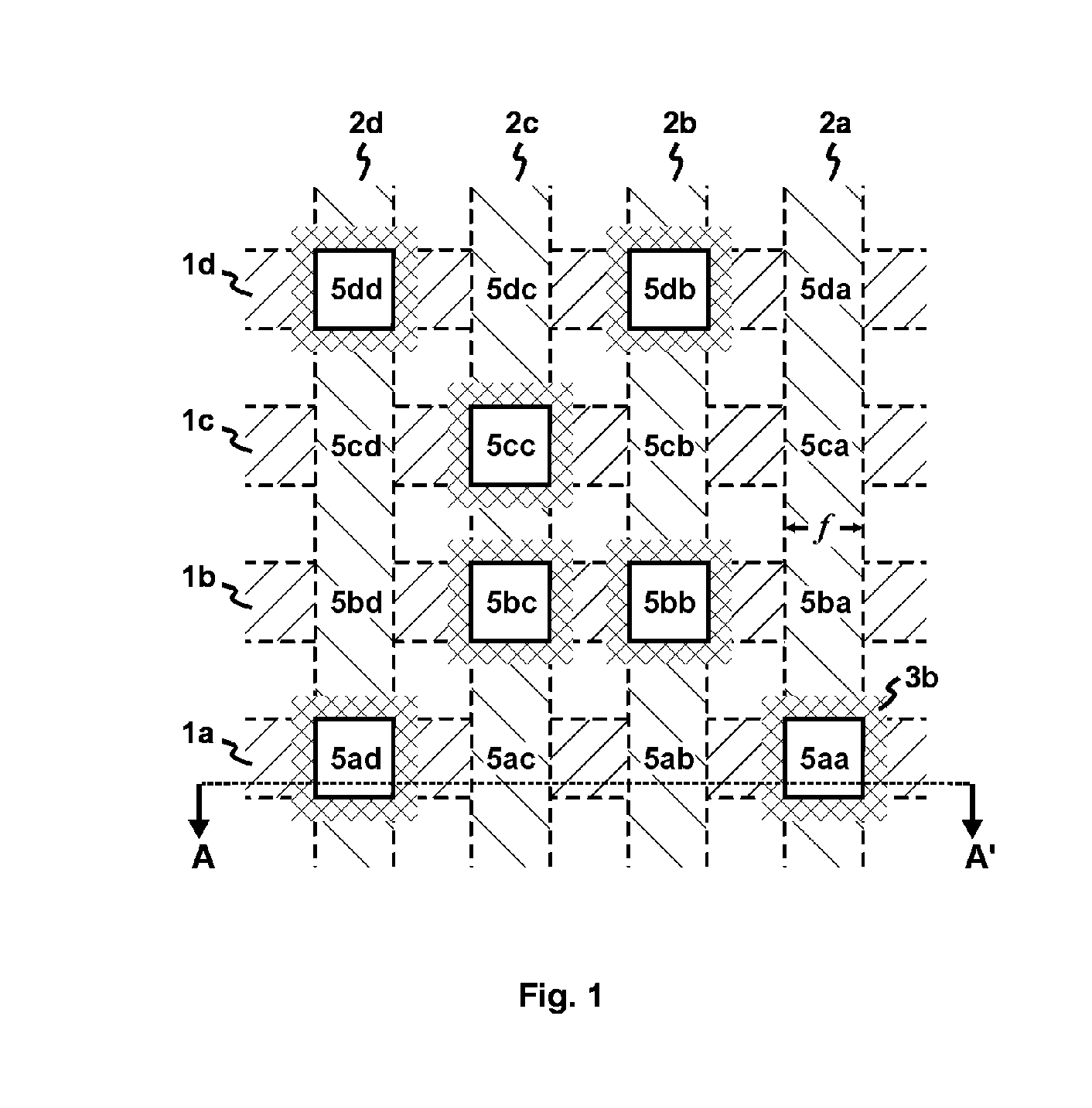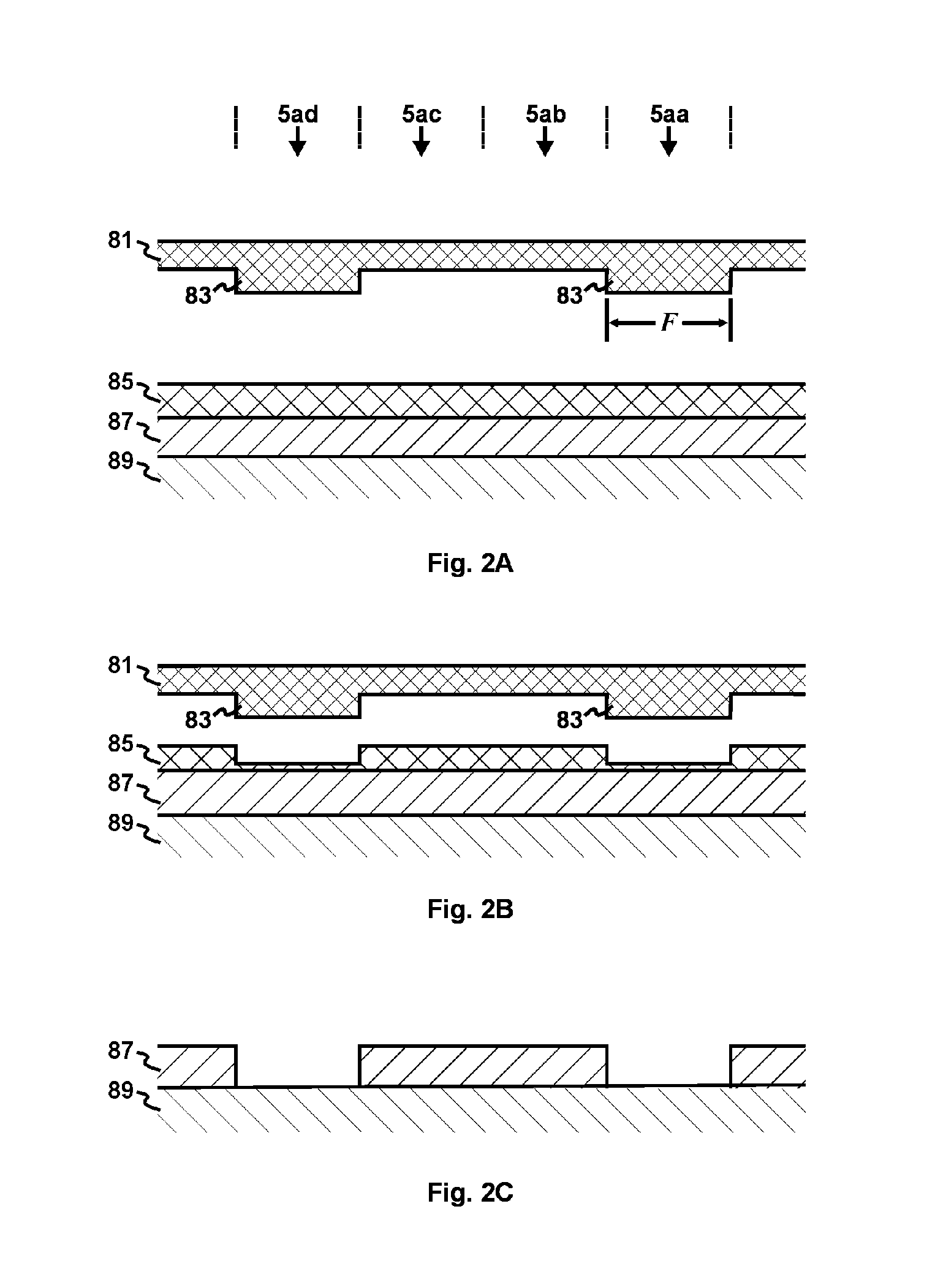Imprinted Memory
a memory and imprinting technology, applied in the field of integrated circuits, can solve the problems of difficult application of ret techniques to data masks, increase the data volume of sub-100 nm masks, and increase the complexity of manufacturing, so as to achieve easy nanometer printing, reduce data recording costs, and avoid complex mask manufacturing processes
- Summary
- Abstract
- Description
- Claims
- Application Information
AI Technical Summary
Benefits of technology
Problems solved by technology
Method used
Image
Examples
Embodiment Construction
[0017]Those of ordinary skills in the art will realize that the following description of the present invention is illustrative only and is not intended to be in any way limiting. Other embodiments of the invention will readily suggest themselves to such skilled persons from an examination of the within disclosure.
[0018]To lower the data-recording cost, the present invention discloses an imprinted memory, more particularly a three-dimensional imprinted memory (3D-iP). As to its final physical structures, the imprinted memory is same as the mask-ROM. Both use the data-pattern in the data-coding layer to store data. They differ in their data-recording method: the imprinted memory uses imprint-lithography, while the mask-ROM uses photo-lithography. These methods have different data-recording cost: the data-template used by imprint-lithography is much less expensive than the data-mask used by photo-lithography.
[0019]Imprint-lithography creates patterns by mechanical deformation of imprin...
PUM
 Login to View More
Login to View More Abstract
Description
Claims
Application Information
 Login to View More
Login to View More - R&D
- Intellectual Property
- Life Sciences
- Materials
- Tech Scout
- Unparalleled Data Quality
- Higher Quality Content
- 60% Fewer Hallucinations
Browse by: Latest US Patents, China's latest patents, Technical Efficacy Thesaurus, Application Domain, Technology Topic, Popular Technical Reports.
© 2025 PatSnap. All rights reserved.Legal|Privacy policy|Modern Slavery Act Transparency Statement|Sitemap|About US| Contact US: help@patsnap.com



